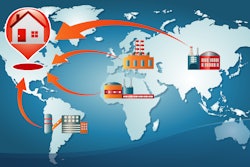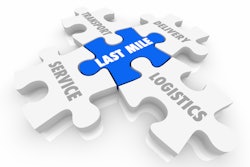
It’s no secret that our global supply chains are under duress. Since the onset of the pandemic, the increase in consumer demand paired with product and labor shortages have tested the current processes and technologies that are in place.
Supply chains are in need of a technology reset, and non-fungible tokens (NFTs) turn out to be a useful tool to digitize, track and trace items. Foundationally, NFTs are verifiably unique digital tokens. NFTs can be used for authentication, to transfer ownership rights and to store data that’s verifiable on blockchains. With the average product moving through many touchpoints on its journey to a consumer, an NFT can be paired with that product and used to record, verify and report each touchpoint. Ownership of that NFT can be transferred as the product changes hands all the way to the eventual purchaser. The implementation of NFTs, into supply chains at large, could enable warehouses, manufacturers and consumers to better understand and refine the product journey. Here are a few examples of how they can be integrated:
Consumer transparency and certification
Supply chain disruptions, combined with a growing consumer interest in sustainable and ethically sourced products, have made it more important than ever to give consumers a clearer understanding into where the things they buy come from and how each step in a product’s journey impacts the environment or helps create a livelihood for workers around the world.
NFTs can be used as “digital twins” of products to verify and track items as they go from raw materials to an item in a consumer’s hands. Not only does this implementation give a purchaser a verifiable certificate of ownership, it can also give consumers insights into sustainable practices in supply chains. And, the value even goes beyond the historical transparency. Digital twin NFTs can also be used for connecting consumers to brands as the means to unlock exclusive perks and post purchase promotions.
For sellers, it’s important to note that when customers accept digital twin NFTs, the seller can then see and take note of the customers’ wallet addresses. This provides a valuable anchor for addressing customers, even across different environments like brick-and-mortar stores, online shops, IoT kiosks or public events. Sellers can issue promotions or solicitations to these addresses and have a much stronger connection to customers than if they just had their email or mailing addresses.
Traceability
Tracking and tracing the movement and quality of goods as they flow through the supply chain has been an ongoing challenge for companies, manufacturers and supply chain professionals, as well as consumers. Digital twin NFTs have the ability to provide real time tracking and verifiable records into the environmental and social impact, and overall quality of goods.
How does this work? For companies moving large amounts of inventory, digital twin NFTs can be leveraged to track and trace individual items or shipments. This could be especially useful with luxury goods and high-priority items where multiple checkpoints and authorizations are required along the way.
Another example is with food and beverage distribution. Food distribution requires temperature controls and checks at multiple locations to ensure quality for consumers and to prevent food waste. Digital twin NFTs give consumers, distributors and manufacturers a non-fungible record of the supply chain journey to ensure the quality of perishable items.
Data insights:
These NFTs can also provide easy visibility into not just where items are located but the history of various components, information on manufacturing steps, and more. As supply chain leaders and technologists seek to better understand and pinpoint logistical challenges, NFTs’ ability to store data using smart contracts on blockchains provides all parties with a verifiable retrospect into product journeys.
Paving the way to adoption
While supply chains are poised to benefit from the adoption of NFTs. There are many common roadblocks to implementing them into legacy supply chain systems.
The first and most common one is the high transaction costs associated with modifying or transferring NFTs on some blockchains. Transaction fees need to be nearly free for all high volume businesses, otherwise they can’t be justified. Implementation expense is another concern. Point of sale and distribution companies involved in new standards have a hard enough time supporting an additional REST endpoint, let alone running a blockchain “validator” node. However, this is changing as more source code packages and cloud based one-click solutions become available.
Lastly, there’s an adoption hurdle to overcome with end consumers. They’ll need to be convinced of the value of scanning a QR code on a box to have the digital twin NFT of a product they’ve purchased transferred to them. This mood is changing based on COVID-19 related QR adoption, but there’s still the need to educate consumers about the many reasons they may want to have the NFT, to access rewards or promotions, and to have visibility into the supply chain history of a product, even to see the environmental impact of what they purchased.
Overall, we are still in the early stages of utilizing NFTs to better our supply chains. The good news is that there is an appetite for transparency, traceability and overall restored trust in logistics and, with the right strategy, NFTs are poised to solve these challenges.



















